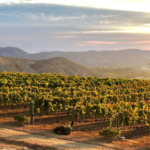About the varieties of crushed stone and its application.
Crushed stone
Crushed stone is one of the most important elements in all kinds of construction. This loose building material is mined by crushing granite and varied (divided into fractions) by the size of grains.
Now there are several of its types – it is granite crushed stone, gravel and limestone. The correct selection of this building material with you will allow you to easily and easily cope with such an important task as building!
The main technical characteristics of crushed stone are as follows:
• strength.
• frost resistance (the ability to preserve all construction functions even at very low temperatures).
• adhesion (t. e. Squeezing of crushed stone with bitumen), dark gray crushed stone is considered the best here.
• Watering.
• harmful chemical impurities.
A separate item should be noted the high radioactivity of crushed stone. Therefore, when buying this building material, you should demand from the seller the relevant documents that guarantee the presence in the material permissible for the construction of a dose of radiation. At the moment, it should not exceed 340BKES of a separate stone), the dimensions of which are not less than 5 mm and not more than 65 mm.
For construction, for example, crushed stone remains the most common, fractions from 15 to 20 mm, and for larger facilities, for example, crushed stone, the dimensions of which vary from 40 to 70 mm, are used for embankments near the railway canvas.
Crushed stone of related fractions, and these are dimensions from 0 mm to 2 mm, 0 mm to 5 mm, from 0 mm to 15 mm, and even from 70 to 120 mm, is also in demand and is indispensable in some types of construction.
One of the main criteria for choosing the desired type of crushed stone is its form. It can be needle and plate with the percentage included. The following types are distinguished:
• ordinary (no more than 30%).
• improved (no more than 25).
• cuboid (no more than 15%).
When buying crushed stone, it is very important to pay attention to the presence of clay particles, the size of which is less than 0.06 mm. If there are a lot of them in percentage, then this significantly reduces the overall quality and technical parameters of crushed stone. For example, we should not forget that the maximum strength of clay content in lumps should be less than 0.25%. For brands M200 and M400, this value should be no more than 3%






